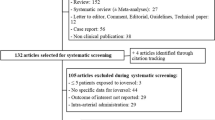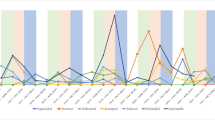Summary
Background
Severe adverse drug reactions in response to intravascular contrast media used in computed tomography, although rare, are potentially life-threatening. This retrospective cohort study aimed to estimate the incidence rate of severe adverse drug reactions to nonionic contrast media at the National Hospital Organization Osaka National Hospital and to report individually on each fatality.
Methods
In total, 42,501 relevant cases were obtained from the individual case safe reports of the Ministry of Health, Labour and Welfare and the reports of code blue from our hospital database for the period of January 2013 to December 2017. The cases were studied, and the rate of adverse drug reactions was calculated from these data.
Results
Severe adverse drug reactions occurred in 0.019% (8/42,501) of the patients, including two deaths. All eight of these patients presented with disturbance of consciousness. Additionally, one patient had dyspnea, five had distributive shock that recovered after treatment, and two died. However, a causal relationship to the contrast media could not be established in one death. When examining the medical histories, four patients were found to have renal dysfunction.
Discussion
Although the rate of severe adverse drug reactions in this study appears to be higher than expected, the sample size of 42,501 patients is insufficient to conclusively determine the incidence and mortality rates of adverse drug reactions, as these rates are extremely low. Further studies are required to estimate the countrywide prevalence of adverse drug reactions in response to contrast media.
Similar content being viewed by others
Abbreviations
- ACR:
-
American College of Radiology
- ADR:
-
Adverse drug reaction
- AIH:
-
Autoimmune hepatitis
- AS:
-
Aortic stenosis
- ASO:
-
Arteriosclerosis obliterans
- AV:
-
Atrioventricular
- CECT:
-
Contrast-enhanced CT
- CM:
-
Contrast media
- CRF:
-
Chronic renal failure
- CRP:
-
C-reactive protein
- CT:
-
Computed tomography
- DoC:
-
Disorder of consciousness
- HCC:
-
Hepatocellular carcinoma
- ICSR:
-
Individual case safe reports
- IM:
-
Intramuscular
- IRB:
-
Institutional review board
- IV:
-
Intravenous
- PCPS:
-
Percutaneous cardiopulmonary support
- RCC:
-
Renal cell carcinoma
References
Berrington De Gonzalez A, Mahesh M, Kim KP, Bhargavan M, Lewis R, Mettler F, et al. Projected cancer risks from computed tomographic scans performed in the United States in 2007. Arch Intern Med. 2009;169:2071–7.
Solomon R. Contrast media nephropathy—how to diagnose and how to prevent? Nephrol Dial Transplant. 2007;22:1812–5.
Ono K, Yoshitake T, Hasegawa T, Ban N, Kai M. Estimation of the number of CT procedures based on a nationwide survey in Japan. Health Phys. 2011;100:491–6.
Nishizawa K, Matsumoto M, Iwai K, Maruyama T. Survey of CT practice in Japan and collective effective dose estimation. Nihon Igaku Hoshasen Gakkai Zasshi. 2004;64:151–8.
Katayama H, Yamaguchi K, Kozuka T, Takashima T, Seez P, Matsuura K. Adverse reactions to ionic and nonionic contrast media. A report from the Japanese Committee on the Safety of Contrast Media. Radiology. 1990;175:621–8.
Bush WH, Swanson DP. Acute reactions to intravascular contrast media: types, risk factors, recognition, and specific treatment. AJR Am J Roentgenol. 1991;157:1153–61.
The American College of Radiology. Manual on contrast media, version 10.3.. https://www.acr.org/-/media/ACR/Files/Clinical-Resources/Contrast_Media.pdf. Accessed: August 29th, 2020.
Suh YJ, Yoon SH, Hong H, Hahn S, Kang DY, Kang HR, et al. Acute adverse reactions to nonionic iodinated contrast media: a meta-analysis. Invest Radiol. 2019;54:589–99.
Lasser EC, Lyon SG, Berry CC. Reports on contrast media reactions: analysis of data from reports to the U.S. Food and Drug Administration. Radiology. 1997;203:605–10.
Cochran ST, Bomyea K. Trends in adverse events from iodinated contrast media. Acad Radiol. 2002;9:S65–8.
Mortelé KJ, Oliva MR, Ondategui S, Ros PR, Silverman SG. Universal use of nonionic iodinated contrast medium for CT: evaluation of safety in a large urban teaching hospital. AJR Am J Roentgenol. 2005;184:31–4.
Wang CL, Cohan RH, Ellis JH, Caoili EM, Wang G, Francis IR. Frequency, outcome, and appropriateness of treatment of nonionic iodinated contrast media reactions. AJR Am J Roentgenol. 2008;191:409–15.
Hunt CH, Hartman RP, Hesley GK. Frequency and severity of adverse effects of iodinated and gadolinium contrast materials: retrospective review of 456,930 doses. AJR Am J Roentgenol. 2009;193:1124–7.
Kobayashi D, Takahashi O, Ueda T, Deshpande GA, Arioka H, Fukui T. Risk factors for adverse reactions from contrast agents for computed tomography. BMC Med Inform Decis Mak. 2013;13:18.
Cabinet Office Japan. Annual report on the ageing society. 2018. https://www8.cao.go.jp/kourei/english/annualreport/2018/2018pdf_e.html, Summary. Accessed: August 29th, 2020.
Motosugi U, Ichikawa T, Sano K, Onishi H. Acute adverse reactions to nonionic iodinated contrast media for CT: prospective randomized evaluation of the effects of dehydration, oral rehydration, and patient risk factors. AJR Am J Roentgenol. 2016;207:931–8.
Acknowledgements
We would like to thank Editage for English language editing (https://www.editage.jp/)
Author information
Authors and Affiliations
Corresponding author
Ethics declarations
Conflict of interest
T. Honda, K. Kuriyama, K. Kiso, K. Kishimoto, T. Tsuboyama, A. Inoue and M. Higashi declare that they have no competing interests.
Ethical standards
The study was approved by the appropriate institutional ethics committee and certify that the study was performed in accordance with the ethical standards as laid down in the 1964 Declaration of Helsinki and its later amendments or comparable ethical standards.
Rights and permissions
About this article
Cite this article
Honda, T., Kuriyama, K., Kiso, K. et al. Incidence rate of severe adverse drug reactions to nonionic contrast media at the National Hospital Organization Osaka National Hospital. Allergo J Int 29, 240–244 (2020). https://doi.org/10.1007/s40629-020-00139-1
Received:
Accepted:
Published:
Issue Date:
DOI: https://doi.org/10.1007/s40629-020-00139-1




